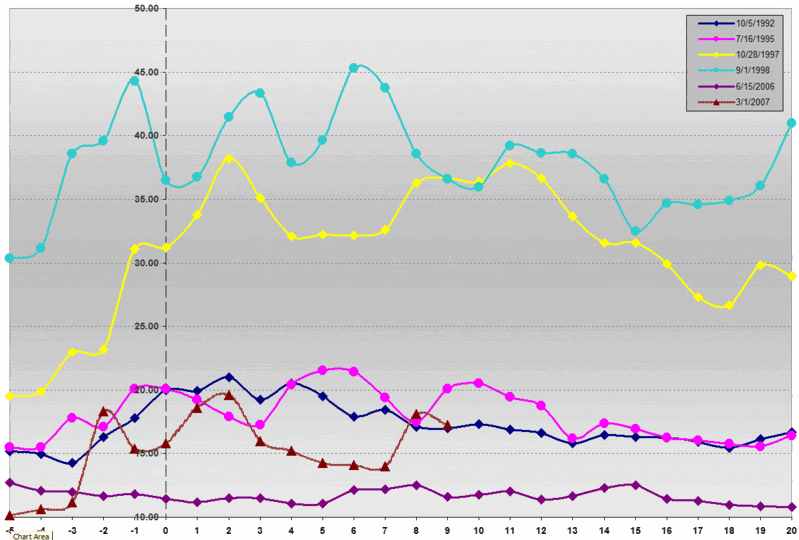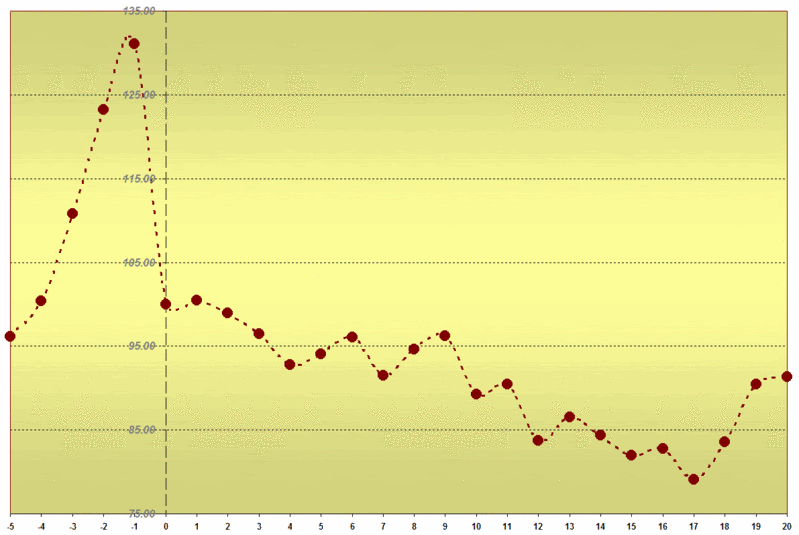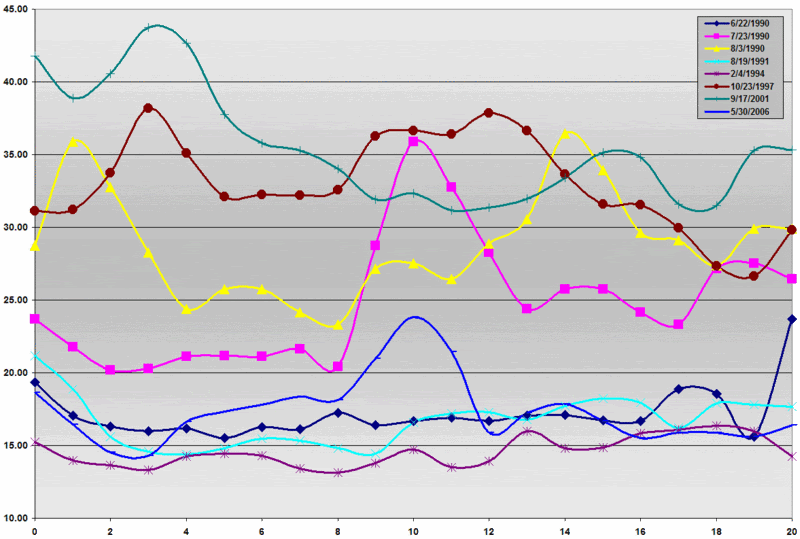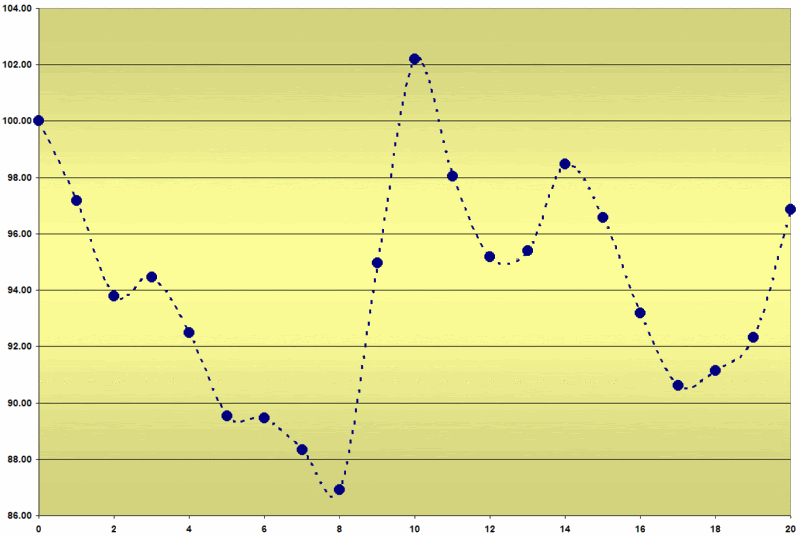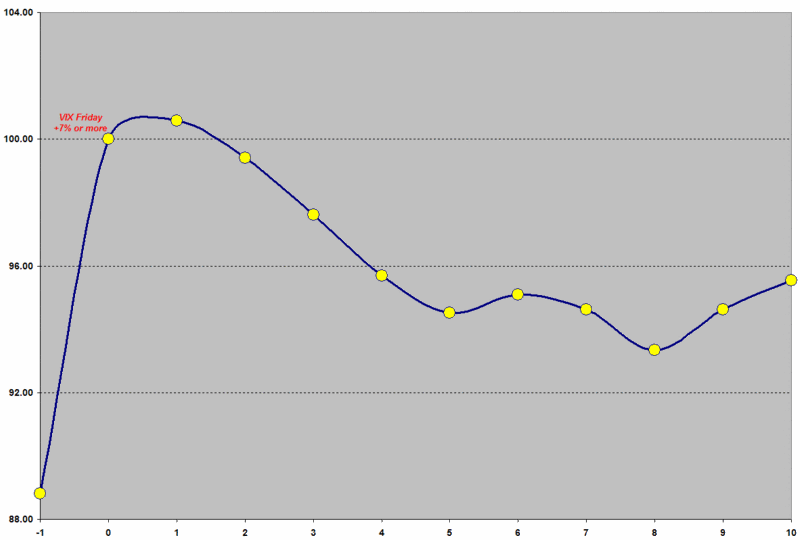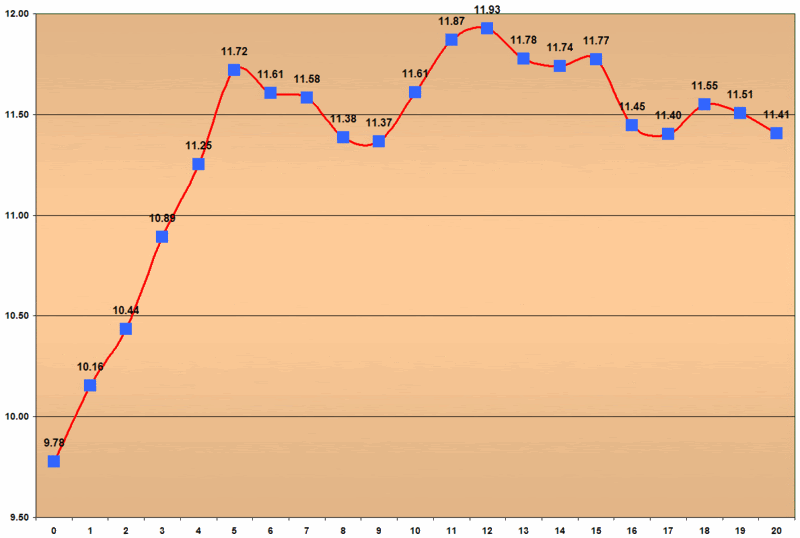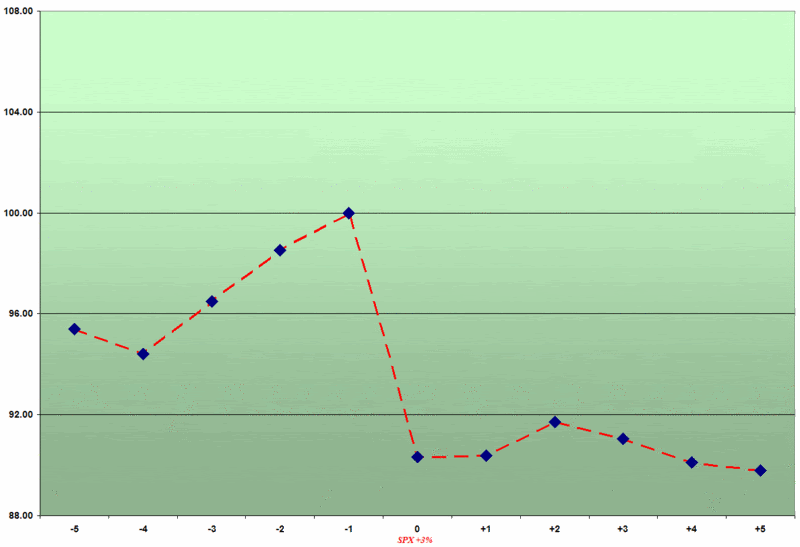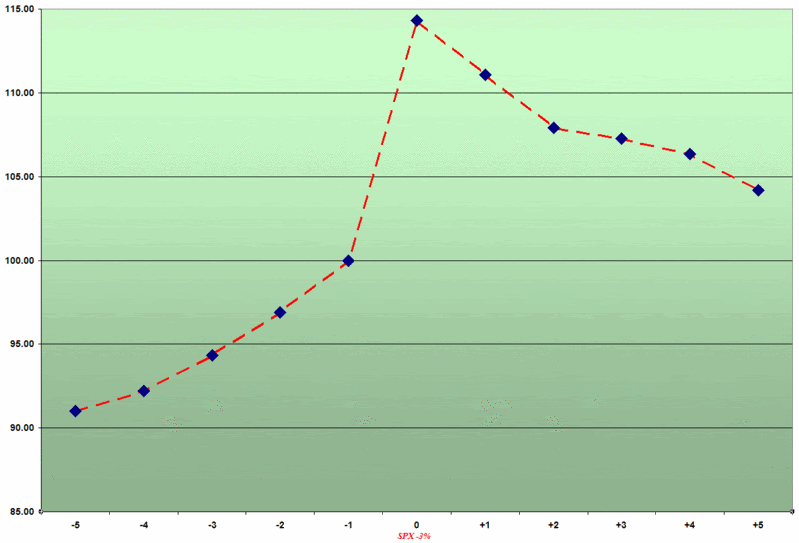More Unprecedented Elasticity in the VIX
 Clearly, the markets and the VIX took some interesting twists and turns yesterday, but how unusual were those movements?
Clearly, the markets and the VIX took some interesting twists and turns yesterday, but how unusual were those movements?
One interesting statistic is that yesterday’s VIX trading range was 24.8% of the prior day’s close. This has only happened nine times in the last decade and fully 5 of these 9 instances have occurred in the last three weeks!
Another interesting statistic is that the VIX, which is known more for spiking up than spiking down, finished yesterday 18.7% below the intra-day high. This has happened just six times since 1990 and twice (last June and two weeks ago today) in the past eight years. For those who may have some interest in these matters, each of these six occasions happened to fall during a bull market.
I put together my faithful composite historical graph of those six instances. It shows evidence of some additional echo volatility in the subsequent 20 trading days and the lack of a dramatic reversion to the mean which most spikes tend to demonstrate over this period. (An important heuristic is at work here: intra-day spikes tend to have much less subsidence than end of day and multi-day spikes, partly because the nature of intra-day spikes is that much of the subsidence happens before the close.)
If you look at the individual data points, however, (which include the first nine trading days following the 3/1/07 turmoil) some echo volatility is present, but, for the most part, volatility lessens substantially after the first ten trading days.

